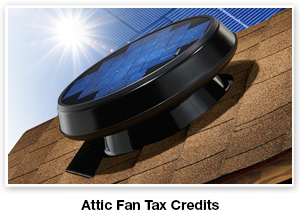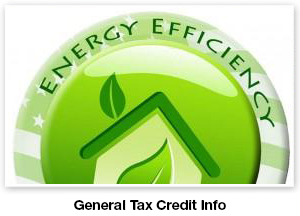


Now you can get the credit you deserve for making smart, energy-wise decisions. Installing the Solatube ISn System with integrated solar earns you a 30% tax credit on cost of the product and installation. There are credits for other Solatube Systems and Solar Star Attic Fan products. Read below for details.
When filing your federal taxes, claiming your credit is easy. You simply file IRS Form 5695 and submit your receipt along with the Manufacturer’s certification for the appropriate product.
Current Year Certifications:
Solatube Brand Products
Manufacturer Certification Statement
(for products put in service from January 1, 2017 – December 31, 2024)
Hunter Douglas Brand Products
Manufacturer Certification Statement
(for products put in service from January 1, 2023- May 29, 2023)
Manufacturer Certification Statement
(for products put in service after May 30, 2023)
Tax credits for daylighting products
Solatube International, Inc. certifies that the following products, as indicated, qualify for federal energy tax credits.
- Solatube Integrated Solar Daylighting Systems 160 and 290 Daylighting Systems when integrated with a Solar Electric Nightlight OR a Solar-Powered Daylight Dimmer
- Solar Powered Attic Fans and Solar-Powered Garage Fans
- All models of Solar Operable Skylights
What is excluded?
The federal tax credit applies to the cost of qualified Solatube products and installation. Accessories and add-ons, such as the Light Kit or Ventilation Kit are excluded.
What do I need in order to claim the tax credit?
You’ll need your receipt for purchase and installation, a Manufacturer’s certification (see above), and IRS Form 5695. On this form, in line 1: Qualified solar electric property costs, you’ll enter the cost of the product and installation.
Do Solatube products installed in my second home or rental property qualify?
Existing homes and new construction qualify; as well as primary residences and secondary residences, such as vacation homes. Rental properties do not qualify.
When do tax credits expire?
In December 2015, legislation was signed into law that extended the Solar Investment Tax Credit (ITC), which provides for a federal income tax credit for residential photovoltaic systems. The federal tax credit is 30% through December 31 2019, 26% Jan 1 2020 – Dec 31 2022, expiring starting in 2023. Over the past couple of years we have seen changes to the federal tax credit.
Due to the COVID-19 pandemic, the 26% rate was extended through the end of 2022 where it would decrease again to 22% on January 1, 2023. In 2024, the tax credit was originally scheduled to end for all residential solar installations and related products.
The Inflation Reduction Act throws out the original ramp-down schedule in favor of a reinstated 30% tax credit and a 10-year extension for any residential installations through 2032. Rebranded as the “Residential Clean Energy Credit”, the new rate is retroactive to any solar, or solar and battery system placed into service on or after January 1, 2022. Beginning in 2033 the tax credit will gradually phase out and be gone by the end of 2035.
Here’s a quick summary of the new rates and phase-out schedule:
- 30% through December 31, 2032 (retroactive for 2022 installations)
- 26% beginning January 1, 2033 through December 31, 2033
- 22% beginning January 1, 2034 through December 31, 2032
- 0% beginning January 1, 2035 forward
Is there a cap on the tax credit?
No, there is no cap for residential photovoltaic systems placed into service after December 31, 2008 and before December 31, 2032.
Tax credits for Solar Powered Attic Fans
Which models qualify for tax credits?
All Solatube Solar Powered Attic Fans are considered residential photovoltaic systems, which means they turn sunlight into energy, so a portion of the cost of the fans qualify for a 30% federal income tax credit.
In IRS Notice 2013-70, a clarification was made that specifically excludes portions of Solar Powered Exhaust Fans. Solatube’s Solar Powered Attic Fan is a hybrid product that is both an exhaust fan and produces electricity. The electricity producing portion of the product is eligible for the 30% federal tax credit while the fan portion is not eligible.
The electricity producing solar panel and related components of the Solar Powered Attic Fan are 70% of the overall cost of the unit. Therefore, both the unit and installation are credit eligible at 70% of the total Solatube Solar Powered Attic Fan sales price to the customer.
What do I need in order to claim the tax credit?
You’ll need your receipt for purchase and installation, a Manufacturer’s certification (see above), and IRS Form 5695.
Is there a cap on the tax credit?
There is no credit cap for residential photovoltaic systems placed into service after December 31, 2008 and before December 31, 2032.
Do Solatube Solar Powered Attic Fan products in my second home or rental property qualify?
Existing homes and new construction qualify; as well as primary residences and secondary residences, such as vacation homes. Rental properties do not qualify.
Are the Solatube Solar Powered Attic Fan DIY kits eligible?
Yes, Solar Powered Attic Fan DIY Kits – both roof and interior mount kits – are eligible. Of the total product price, 70% qualifies for the tax credit.
Are Solatube Solar Powered Attic Fan products eligible even though they aren’t ENERGY STAR® rated?
An ENERGY STAR rating is not required for the photovoltaic system tax credit eligibility program.
Hunter Douglas tax credit information
The federal government is now offering energy tax credits on select energy-efficient Hunter Douglas Duette® Honeycomb Shades—letting you earn 30% of the purchase price* back in the form of a tax credit, up to a maximum annual amount of $1,200
Duette Honeycomb Shades are designed to provide superior insulation at the window, helping to lower your monthly utility bills
Reducing your energy use also helps create a more sustainable environment
* Applicable “purchase price” is the amount paid by the consumer for the product(s), including sales tax, and does not cover the costs for measuring or installing qualifying products.
How the Hunter Douglas Tax Credit Works
1. Purchase Qualifying Products
To be eligible for the tax credit, purchase and have your qualifying products installed between January 1 and December 31 of the applicable tax year.
For a list of qualifying products, please see the applicable Qualifying Product Document below. The Qualifying Product Document is amended from time to time; be sure to consult the Qualifying Product Document that was in effect on your purchase date.
2. Save Your Invoice
Save your original purchase invoice and/or proof of payment for the amount paid for the qualifying Hunter Douglas products. (Measuring and installation charges are not eligible for this tax credit.)
3. Print Out Your Certificate and Meet With Your Tax Professional
Download the applicable Hunter Douglas Manufacturer’s Certificate Statement (see above) based on your purchase date. Print out the certificate and take it, along with your sales invoice and/or proof of payment, to your tax professional when filing your tax returns.
General tax credit information
What is the difference between a tax deduction and a tax credit?
A tax deduction is subtracted from income before total tax liability is computed. On the other hand, a tax credit is subtracted directly from the total tax due. You can carry forward any excess unused credit, though, and apply it to reduce the tax you owe in future years.
When were the tax credits established and when do they expire?
Tax credits for residential solar installations were initially created under the Energy Policy Act of 2005, and have been extended several times under other additional acts. In December 2015, legislation was signed into law that extended the Solar Investment Tax Credit (ITC), which provides for a federal income tax credit for residential photovoltaic systems. The federal tax credit is 30% through December 31 2019, 26% Jan 1 – Dec 31 2022, expiring starting in 2023.
However, due to the COVID-19 pandemic, the 26% rate was extended through the end of 2022 where it would decrease again to 22% on January 1, 2023. In 2024, the tax credit was originally scheduled to end for all residential solar installations.
The Inflation Reduction Act throws out the original ramp-down schedule in favor of a reinstated 30% tax credit and a 10-year extension for any residential installations through 2032. Rebranded as the “Residential Clean Energy Credit”, the new rate is retroactive to any solar, or solar and battery system placed into service on or after January 1, 2022. Beginning in 2033 the tax credit will gradually phase out and be gone by the end of 2035.
Here’s a quick summary of the new rates and phase-out schedule:
- 30% through December 31, 2032 (retroactive for 2022 installations)
- 26% beginning January 1, 2033, through December 31, 2033
- 22% beginning January 1, 2034, through December 31, 2032
- 0% beginning January 1, 2035, forward
What do I need in order to claim the tax credit??
You’ll need your receipt for purchase and installation, a Manufacturer’s certification (see above), and IRS Form 5695.
Are there local incentives for my county and/or city?
Many local utilities provide financial incentives for energy-efficient products. To find out if rebates or incentives are available in your area, visit the ENERGY STAR rebate finder at www.energystar.gov. For additional information, please visit your state energy office website for specific state tax information or go to https://www.dsireusa.org/ to view the database of State Incentives for Renewables and Efficiency. Another valuable website to find energy incentives is Energybot.
Does a product with an ENERGY STAR rating automatically qualify for federal tax credits?
Prior to December 31, 2013, all products with the ENERGY STAR label were eligible for 10 % federal tax credits because of their ability to operate efficiently and lower energy bills. After this date, there may be some ENERGY STAR-rated products that do not qualify for federal tax credits. To find out for sure, it’s recommended you visit www.irs.gov or consult a tax professional for advice.
*Solatube International and NW Natural Lighting makes no warranty as to the qualification of the products for federal tax credits if there are changes in requirements or applicable law after such date.
Solatube International, Inc. and NW Natural Lighting, is not a tax advisor. Taxpayers claiming a tax credit should consult a tax professional with any questions. Neither Solatube International or NW Natural Lighting are responsible or liable for the taxpayer’s ability to receive tax credits. This document is not intended to constitute legal or tax advice. More comprehensive information will be made available by the IRS. The user maintains the full and complete responsibility to comply with all codes, laws, and regulations applicable to the safe and proper use, handling, and installation of the product and should consult with a professional for all construction- and design-related questions. The information contained herein is believed to be accurate as of the time of preparation. However, both Solatube International and NW Natural Lighting makes no warranty as to the accuracy of this information.

